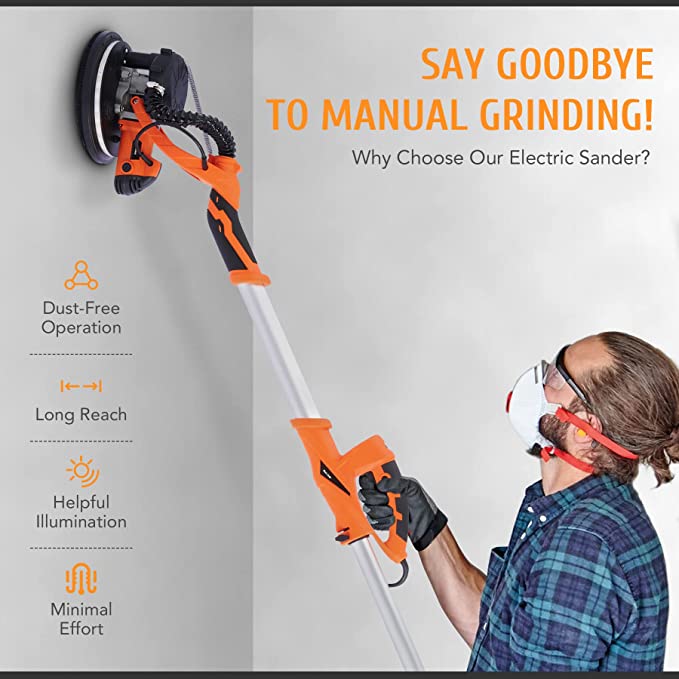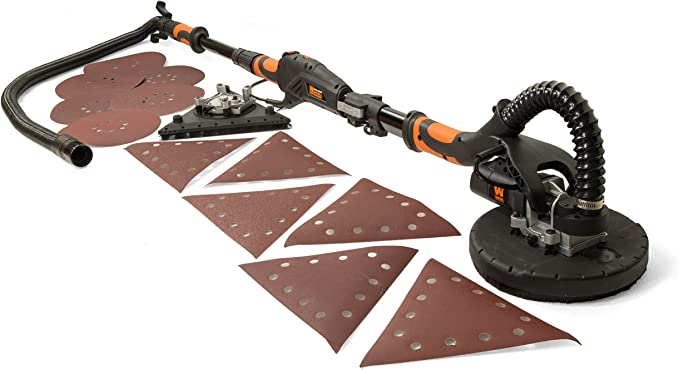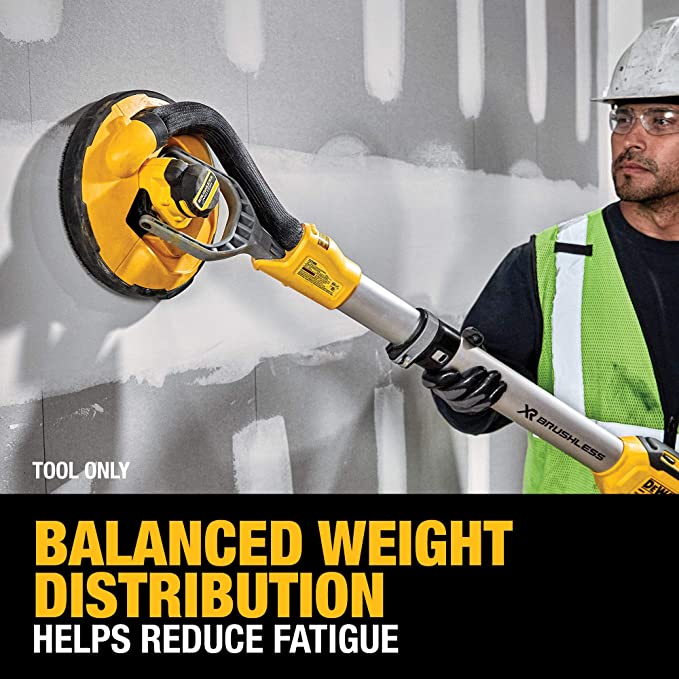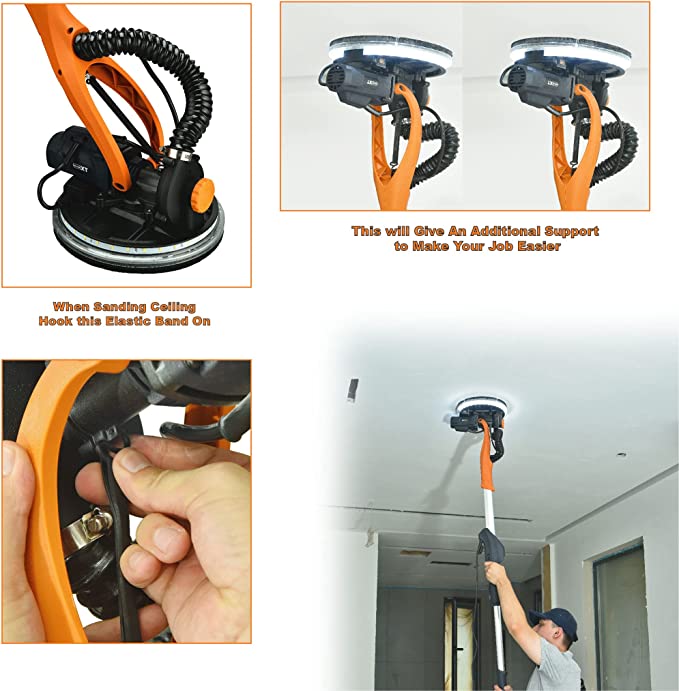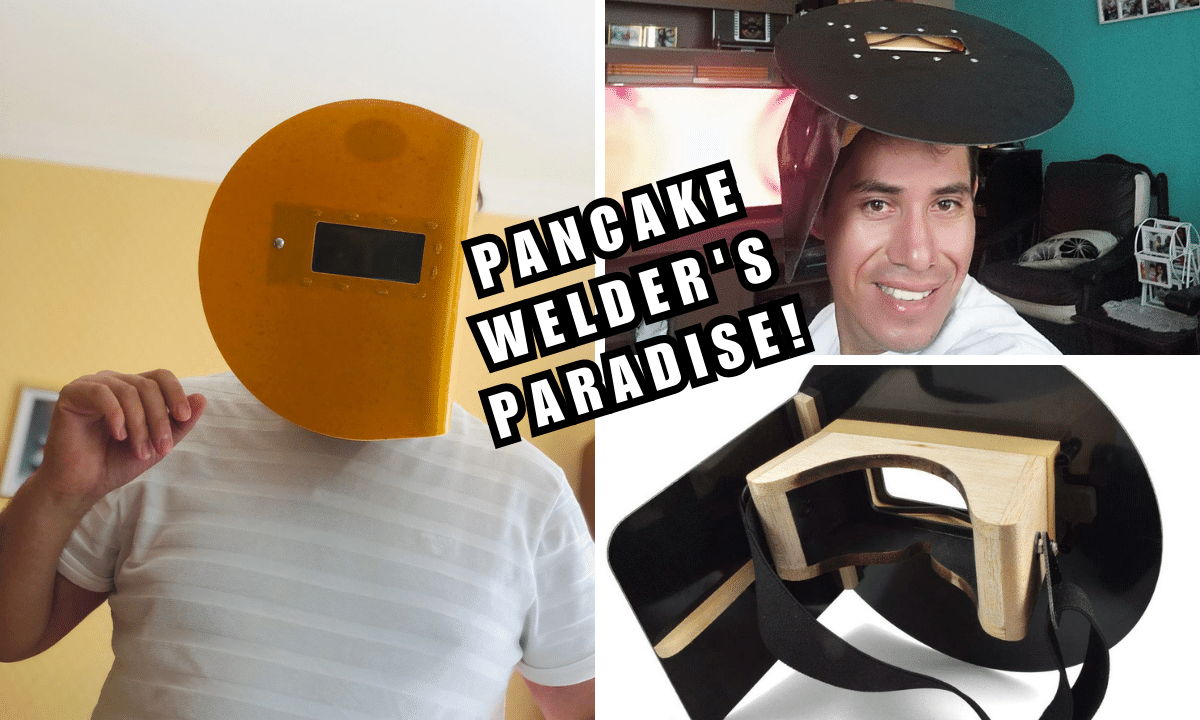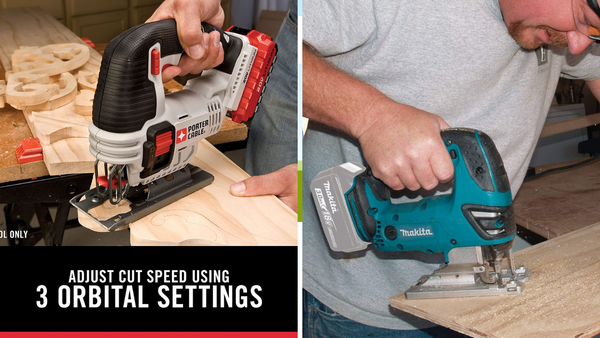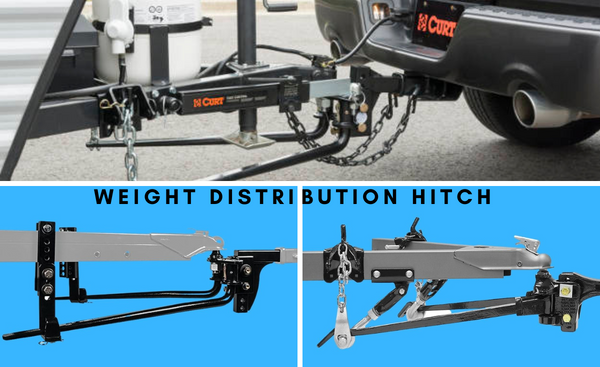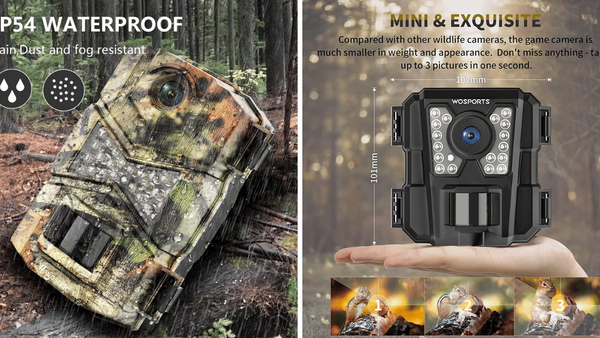Are you looking for a way to make your drywall project smoother? Check out our list of the 5 best drywall sanders and make sanding your drywall a breeze!
Are you looking for an orbital sander with dust collection? If so, then you’ve come to the right place! We’ve got the perfect tool for you that will make all your sanding projects easier and faster.
Are you looking for a way to make your drywall sanding projects easier and faster? Look no further than the latest drywall sander on the market. This innovative tool is designed to make your drywall sanding projects a breeze. It’s lightweight, easy to use, and has a powerful motor that delivers the perfect finish every time.
The drywall sander is equipped with a dust collection system that ensures your workspace stays clean and free of dust and debris. This means you can sand quickly and efficiently without having to worry about the mess. The sander also has a variable speed control, so you can adjust it to the perfect setting for whatever job you’re doing.
The drywall sander is perfect for DIYers and professionals alike. Whether you’re a beginner or an experienced contractor, this sander will make your job easier. With its ergonomic design and powerful motor, you’ll be able to finish your projects faster and with better results.
If you’re looking for a reliable, efficient, and easy-to-use drywall sander, then this is the tool for you. It’s the perfect solution for all your drywall sanding needs. Get ready to experience the power and convenience of the latest drywall sander on the market. You won’t be disappointed!
How We Choose
Sanding drywall can be a tedious and time-consuming task, but it's essential to get the job done right. If you're looking for the perfect drywall sander that will make your job easier and faster, look no further than what our team has compiled for you below.
You know that having the right tool makes all the difference when it comes to sanding drywall, but with so many different types and brands available, it can be hard to know which one is right for you.
Our team of experts has read thousands of product reviews to find the best drywall sander for your needs. We've done all the hard work so that you can easily find and purchase the perfect sander for your project.
No more guesswork. No more wasted time or money. Just the perfect sander for your job - check out our reviews of top-rated sanders today!
ZELCAN 850W Electric Power Drywall Sander with Vacuum Dust Collector
Why We Love It:
The ZELCAN 850W Electric Power Drywall Sander is perfect for a wide range of jobs and projects. Its powerful 850W motor allows for shorter work times and a longer service life.
It also has a built-in vacuum attachment that automatically pulls in up to 97% of the dust and debris created as you work, making it safer for your lungs and easier for cleanup.
What You Should Know:
This drywall sander is designed for total control, with an ambidextrous auxiliary handle, 5 speed settings from 800 to 1900 rpm, and an adjustable base rim that makes short work of corners, edges, and other hard-to-reach surfaces.
Plus, it's equipped with two rings of LED lights to keep you aware and in control even in the dimmest workspaces. Make sure your sanding job is done right with the reliable and efficient ZELCAN 850W Electric Power Drywall Sander!
WEN 6377 Variable Speed 5-Amp Dual-Head Drywall Sander with 15-Foot Hose
Why We Love It:
WEN 6377 Variable Speed 5-Amp Dual-Head Drywall Sander with 15-Foot Hose is perfect for sanding walls, ceilings and other surfaces. It features both triangular and circular hook-and loop sanding heads with tool-free installation and variable speed adjustment ranging from 600 to 1500 rpm.
Plus, its 5-Amp head-mounted motor provides maximum torque to the sanding disc and its automatic dust removal system combined with the 15-foot dust hose minimizes clean-up.
What You Should Know:
WEN 6377 Variable Speed 5-Amp Dual-Head Drywall Sander is a great choice for any homeowner or professional looking to quickly sand drywall. It comes with 60, 80, 120, 150, 180 and 240 grit 9-Inch sanding discs and 11-1/4 inch triangle sandpaper to get the job done quickly and efficiently.
Plus, it even has a swivel head that extends up to 30 inches, making it easy to reach tight corners and crevices. So why wait? Get your own WEN 6377 Variable Speed 5-Amp Dual-Head Drywall Sander with 15-Foot Hose today!
DEWALT DCE800B 20V MAX* Cordless Drywall Sander
Why We Love It:
The DEWALT DCE800B 20V MAX* Cordless Drywall Sander is the perfect tool for tackling any type of sanding job. Its brushless motor provides improved runtime and durability, eliminating the need to change brushes.
Plus, its telescoping shaft allows for easy access to confined spaces and hard-to-reach areas. And with its Wireless Tool Control feature, you can turn on and off the sander wirelessly when paired with a compatible dust extractor.
What You Should Know:
The DEWALT DCE800B 20V MAX* Cordless Drywall Sander is designed to make sanding quicker, easier, and more efficient.
It features a variable-speed dial that helps you match the speed to the application, and its quick, secure, and tool-free connection to DEWALT Dust Extractors ensures maximum dust extraction. So why wait? Get your own DEWALT DCE800B 20V MAX* Cordless Drywall Sander today!
Maxxt Drywall Sander, REAL Self-Vacuum System, LED Light
Why We Love It:
Maxxt Drywall Sander is the ultimate tool for any DIYer or professional looking to quickly and effortlessly sand walls and ceilings. The patented turbofan structure and REAL Self-Vacuum System provide up to 95% dust collection, eliminating the need for a vacuum cleaner.
The telescopic handle and lightweight design make it easy to maneuver and reach tight spaces. Plus, the LED light helps to lighten the cupped and raised spots on the wall.
What You Should Know:
Maxxt Drywall Sander is the perfect tool for any drywall sanding job. It has a powerful 6.5A motor and variable speed control, allowing you to customize the speed for different sanding jobs.
The machine also comes with six 9” sanding discs with hook & loop system - six holes (#60/80/120/150/180/240) - and a 30L dust collection bag. Order Maxxt Drywall Sander today and get the job done right!
Hyde 09977 Radial Sander
Why We Love It:
The Hyde 09977 Radial Sander is a must-have for all professional and DIY sanding projects. It’s one of the lightest radial sanders on the market, so it’s easy to maneuver while sanding larger areas.
It has a unique pivoting hinge and round shape that prevents flipping, and it accepts any 9" round abrasive material with the hook and loop attachment feature. Plus, it attaches to an Acme threaded pole for added ease.
What You Should Know:
The Hyde 09977 Radial Sander is a great choice for anyone looking to get a smooth and professional finish on a variety of sanding projects. It offers a quicker sanding time, and the hook and loop system makes it easy to quickly attach and change out abrasive sheets.
Plus, the pivoting hinge prevents flipping which helps protect walls from any damage during sanding. So why wait? Get the Hyde 09977 Radial Sander today and enjoy smoother, faster sanding.
FAQs
Do you need an orbital sander with dust collection but don't know which one to choose?
When it comes to orbital sanders, it can be hard to find the right one with all the dust collection features you need. With so many different types and brands on the market, it can be difficult to know which one is best for you.
We've compiled a list of the most frequently asked questions about orbital sanders with dust collection so you can make an informed decision and get the best value for your money.
1.What should I look for in a drywall sander?
When looking for a drywall sander, it is important to consider the size, weight, and power of the tool. The larger and heavier the sander, the more powerful it is likely to be.
It is also important to look for a sander with a dust collection system, as this will help keep the area clean and reduce the amount of dust in the air. Additionally, look for a sander with adjustable speed settings, so you can adjust the speed for different applications. Finally, look for a sander with a comfortable handle, as this will make it easier to use for extended periods of time.
2. How long does it take drywall dust to settle after sanding?
It depends on the size of the room and the amount of dust produced. Generally, it takes around an hour or two for the dust to settle, but this can vary depending on the environment. It's also important to ensure that you use proper ventilation when sanding drywall, as this will help to reduce the amount of dust in the air.
3. How do you sand drywall effectively?
Sanding drywall is an important part of the drywall installation process. To sand drywall effectively, you will need a sanding sponge, a drywall pole sander, and a vacuum cleaner. Start by using the sanding sponge to lightly sand the drywall. Then, use the pole sander to sand the area more thoroughly. Finally, use the vacuum cleaner to remove all the dust and debris. Make sure to wear a dust mask while sanding to protect yourself from the dust and particles.
4. How do you manage drywall dust when sanding?
When sanding drywall, it is important to use the proper safety equipment and to take steps to reduce the amount of dust created. Wear a dust mask, safety goggles, and gloves to protect yourself from the dust particles. Make sure that the area is well-ventilated. Use a vacuum with a HEPA filter to collect the dust as you sand. Cover furniture and other items in the area with a drop cloth to protect them from the dust. Finally, use a damp cloth to wipe down the area after sanding to collect any remaining dust particles.
5. What are the 3 most important sander safety rules?
1. Always wear safety goggles or other eye protection when operating a sander.
2. Make sure the sander is properly grounded and connected to the power source.
3. Keep the sander in good condition by regularly checking and replacing worn parts.
4. Make sure the work area is well-ventilated and free of dust and debris.
5. Keep your hands and body away from the sander while it is in operation.
6. Always use a dust mask when sanding to avoid inhaling any particles.
7. Never leave the sander unattended while it is running.
8. Always follow the manufacturer’s instructions for proper use and maintenance.
6. What grit is best for sanding walls?
The grit of sandpaper used for sanding walls depends on the condition of the wall. For walls in good condition, use a medium-grit sandpaper such as 120-grit. If the walls are in poor condition, use a coarse-grit sandpaper such as 80-grit. If you need to remove old paint or wallpaper, use a very coarse-grit sandpaper such as 40-grit.
7. Do you have to wait 24 hours to sand drywall?
Yes, it is recommended to wait 24 hours before sanding drywall. This allows the joint compound to completely dry, which will make it easier to sand and will create a smoother finish. Additionally, it is important to use the right kind of sandpaper and to sand in the same direction as the drywall seams.
8. What happens if you sand drywall too much?
Sanding drywall too much can cause the drywall to become weak and brittle, which can lead to cracks in the wall. It can also cause the drywall paper to tear, leaving a rough, uneven surface. If you sand too much, you may need to replace the drywall. It's important to sand drywall in small, incremental steps and to use a light touch to avoid sanding too much.
9. Do I need to prime After sanding drywall?
Yes, it is important to prime drywall after sanding. Priming the drywall after sanding helps to seal the drywall and provide a smooth, uniform surface for painting. Priming also helps to fill in any small holes or imperfections in the drywall, creating a more professional looking finish. Additionally, priming the drywall helps to prevent the paint from absorbing into the drywall and can help to reduce the amount of paint needed for the job.
10. How do you sand without getting dust everywhere?
The best way to sand without getting dust everywhere is to use a vacuum-assisted sander. This type of sander uses a vacuum to capture the dust as it is created, eliminating the need for additional cleanup. Additionally, you can use a damp cloth to wipe away any remaining dust particles. Finally, you can also use a dust mask to avoid inhaling any dust particles.
Conclusion:
A drywall sander is an essential tool for any professional contractor or DIY enthusiast. With the right sander, you can sand drywall in a fraction of the time it would take to do it by hand.
The five sanders we’ve reviewed here are all excellent options, and they will provide you with the performance and durability you need to get the job done.
So choose the one that best fits your needs and get ready to take your drywall sanding to the next level!

